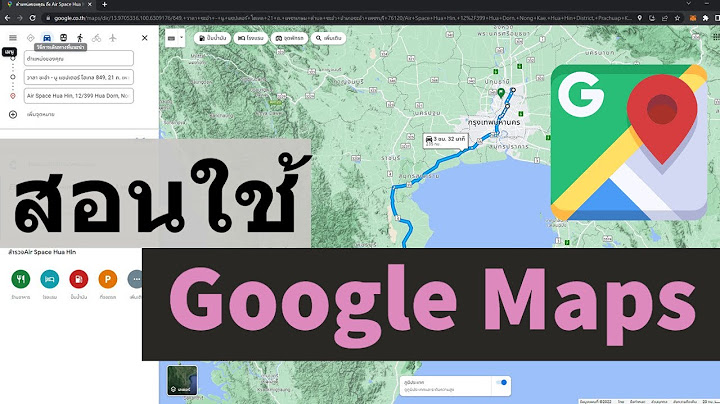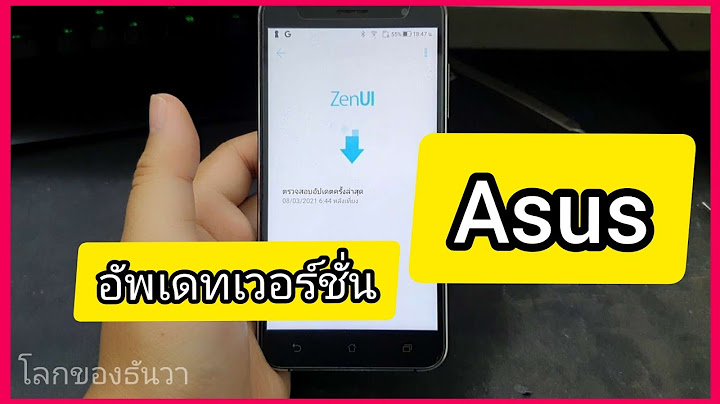V.ing) หมายถงึ ตัง้ ตารอ 11 กจิ กรรม 5. to leave for เปน คํากรยิ า หมายถงึ เดินทางไปยงั ..... ถาใช to leave โดยไมม ี for หมายถึง เดินทางจากที่หน่งึ ไปยงั ทีอ่ ื่น 1. ใหผเู รียนฝกพูดและเขยี นคาํ กลา วลาในแตละสถานการณ 2. เพ่อื จะไดนาํ ไปใชไดถ กู ตอ งและเหมาะสม ใหท ําแบบฝก หัดตอ ไปนี้ Exercise 1 Choose the best answer. Jaew : Hi, Toy. Toy : _______ (1) _______. How have you been? Jaew : _______ (2) _______. And you? Toy : Good, thanks. _______ (3) _______. Jaew : I've changed my work. Now I'm with Jook. Toy : ______ (4) _______. I hope you enjoy it. Jaew : I think so. I'm afraid I have to go now. I've a meeting this afternoon. ___________ (5)____________. Toy : See you later. 1. a. Hi. b. Hi. Jaew. c. Good morning. d. Good morning, Jaew. 2. a. Very well. b. Very well, thank. c. Very well, thanks. 12 d. Very well, Toy. 3. a. How does your work? b. How about your work? c. How do you do your work? d. How are you doing your work? 4. a. How nice! b. How good! c. How's that! d. How about! 5. a. Bye. b. See you. c. Good luck. d. I'll be back. Exercise 2 Choose the best answer. 1. Pom : Hi, Jun. How's life? Jun : ________________. a. I'm fine, thank you. b. Very well, thanks, and you? c. Fine, thanks. d. Nothing to complain. 13 2. Nooch : ____________________. Lak : I'm O.K. a. Good morning, Madam. How are you keeping? b. Good morning, Miss Lak. How are you today? c. Hello, lady. How are everything? d. Hello, Lak. How are you doing? 3. Ton : What's wrong with you, Sommai? Sommai : _______________________ a. I'm not so well. I catch a cold. b. I'm O.K. I'll go to see the doctor. c. Nothing to complain. I have a toothache. d. So, so. My leg is broken. 4. Tui : My mother is waiting for me at the bus stop. I have to go now, bye! Kaew : ___________________________ a. See you. b. Take care. c. Have a good time. d. Please come again. 14 5. Mr.Ya : I'm sorry. I have to leave for Chiangmai now. Goodbye! Miss Pattana : __________________________________________ a. See you later. b. Please come again. c. Have a nice trip. d. Take good care of yourself. 15 เร่ืองท่ี 2 การแนะนาํ ตนเองและผูอื่น (Introducing Yourself and Others) เมือ่ คนพบกันครั้งแรก การแนะนําตนเองใหบ ุคคลอืน่ รจู กั เปนสิ่งสาํ คญั และจําเปนกอนจะ สนทนาพูดคยุ กนั ในเรื่องอื่น ๆ ซง่ึ การแนะนาํ ตนเองและผูอ่นื ในภาษาอังกฤษมสี ํานวนท่ีใชก นั ดงั น้ี 1. การแนะนาํ ตนเอง (Introducing Yourself) ในการแนะนาํ ตนเองใหผูอนื่ รูจกั จะเรมิ่ ตน ดว ยการกลา วทักทายและแนะนําตนเองดว ยสาํ นวนตา ง ๆ ดงั นี้ Hello. My name is (ชอื่ ของผูพูด) . (สําหรบั ผทู อ่ี ยใู นสถานะเดยี วกนั เชน เปนนักศกึ ษาดว ยกนั เปนตน) Hi. I'm (ชอื่ ของผพู ูด). (สาํ หรบั ผทู ีอ่ ยใู นวยั เดยี วกนั ) Good morning. My name is (ช่ือของผูพูด). สวสั ดฉี นั /ผม/ดิฉนั ชื่อ____ Good morning. I'm (ชือ่ ของผพู ดู ). (สาํ หรบั การพูดคยุ อยา งเปน ทางการ) หากตองการบอกชือ่ เลน ใหท ราบดวยกอ็ าจพูดวา Hello. My name is (ชอื่ ของผพู ูด) and my nickname is (ชอ่ื เลน ของผพู ดู ). เมอ่ื กลา วแนะนาํ ตวั แลว คูส นทนาจะตอบวา It's nice to meet you. Nice to meet you. ยินดที ่ีไดร ูจักคณุ I'm glad to meet you. 16 I'm glad to see you. Situation 1 รปู ภาพ Suda : Hi. I'm Suda. What's your name? Malee : Hi. My name is Malee. Suda : Nice to meet you. Malee : Nice to meet you, too. Situation 2 รปู ภาพ กิจกรรม Wichai : Hello. I'm Wichai, my nickname is Chai. Mana : Hello. My name is Mana and my nickname is Na. 1. Wichai : I'm glad to meet you. Mana : I'm glad to meet you, too. ใหผ ูเรยี นจบั คูสนทนา โดยแสดงบทบาทสมมตุ ดิ ังตวั อยา งทงั้ 2 สถานการณ 17 2. ใหฝ กเขยี นบทสนทนาทัง้ 2 Situations โดยใหกําหนดชอ่ื ผสู นทนาดว ยตนเอง 2. การแนะนําผูอื่น (Introducing Others) ในสภาพความเปนจริงของสังคม การพบปะ สังสรรคระหวางกลมุ เพือ่ นหรือบุคคลท่ีทํางานในท่ีเดียวกันตองเกิดขึ้นอยูตลอดเวลา การแนะนํา บุคคลอนื่ ใหรูจ ักกันจงึ เปน เรอ่ื งปกติที่เกดิ ข้ึนอยูเสมอ ในสังคมชาวตะวันตกถอื เปนธรรมเนียมปฏิบัติ วา หากจะพดู คุยระหวา งบุคคลทไ่ี มร จู ักจะตอ งไดรับการแนะนําใหรจู ักกนั เสยี กอ น ยกตัวอยาง เชน สุดาตองการแนะนาํ ใหมาลรี ูจ กั กบั สุวฒั น สุดาตองกลา วแนะนาํ ดงั นี้ Suda : Malee, this is Suwat. Suwat, this is Malee. (มาลนี ่ีคือคณุ สวุ ัฒน คณุ สวุ ัฒนนคี่ อื คุณมาล)ี นอกจากน้ี ยงั มีสาํ นวนท่สี ามารถใชกลา วแนะนาํ ใหบ คุ คลรจู ักอกี เชน Suwat, I'd like to introduce you to Miss Malee. (สวุ ฒั น ผมขอแนะนาํ ใหค ุณรจู กั คุณมาล)ี Suwat, let me introduce Miss Malee to you. (สุวฒั น ผมขออนญุ าตแนะนาํ ใหค ุณรจู กั กบั คณุ มาล)ี Suwat, this is my friend, Miss Malee. (สวุ ัฒน น่คี อื เพื่อนของผม คณุ มาล)ี เม่ือมีการแนะนําใหบ คุ คลหนึ่งรจู ักกับอีกบคุ คลหนึง่ ผทู ี่ไดรบั การแนะนาํ จะทักทาย กลบั วา How do you do? Nice to meet you. ยนิ ดีท่ีไดร ูจ กั Glad to meet you. และคสู นทนากจ็ ะกลา ววา How do you do? Nice to meet you, too. ยินดที ่ไี ดร จู กั เชน กนั Glad to meet you, too. 18 ตวั อยา งบทสนทนาในการแนะนาํ ผูอ นื่ ในสถานการณตาง ๆ ดงั นี้ Situation 1 รปู ภาพ Suda : Suwat, I'd like to introduce you to may friend, Miss Malee. Suwat : How do you do, Miss Malee? Malee : How do you do, Mr.Suwat? Situation 2 รูปภาพ Wichai : Mana, this is Malee, my friend. Mana : How do you do, Miss Malee? Malee : How do you do, Mr. Mana? 19 กจิ กรรม ใหผ ูเ รียนทําแบบฝกหัดตอ ไปน้ี Exercise Fill in the blank with correct expression. 1. Busaba : Suree, this is Dara. Suree : Nice to meet you. Dara : ____________________________ 2. Ta : Took,________________________ Took : Hello, Tik. Tik : Hi, Took. 3. Pom : Pook, this is Pom. Pook : ____________________________ Pom : Nice to meet you too. 4. Mr. Joe : Mr. John, _____________________ Mr. John : How do you do? Mrs. Roger : How do you do? 5. Miss. Agner : Mrs. Johnson, may I introduce you to Mr. Anderson. Mrs. Johnson : _______________________________________ Mr. Anderson : _______________________________________ 20 เร่ืองที่ 3 การใหแ ละสอบถามขอ มลู สวนตัว (Sharing Personal Data) เมื่อคสู นทนาไดทกั ทายแลวก็จะมีการพูดคุยและแลกเปลี่ยนขอมูลซ่ึงกันและกัน การสอบถาม ขอมูลสวนตัวถือไดวาเปนการทําความรูจักกันใหมากข้ึน ขอมูลสวนตัวจะประกอบดวย ชื่อ นามสกุล ชอื่ เลน วัน เดอื น ปเ กิด อายุ สญั ชาติ ท่ีอยู ครอบครวั อาชีพ งานอดิเรก ฯลฯ 1. การถามช่ือ คุณชอ่ื อะไร A : What's your name? B : My name is (ชอื่ ผตู อบคาํ ถาม). หรอื I'm (ชือ่ ผูต อบคําถาม). 2. การถามชื่อบุคคลท่ี 3 A : Who's that? นน่ั ใคร B : He/She is (ชอื่ ของบุคคลนนั้ ๆ). 3. การถามวนั /เดอื น/ปเกิด A : When were you born? คุณเกดิ เมื่อไร B : I was born on Oct 24, 1987. (กรณที บ่ี อกวันเกิดดว ย ใหใ ช Preposition on) I was born in June, 1987. (กรณบี อกเฉพาะเดอื นเกิดใหใช Preposition in) 21 4. การถามสว นสูง/น้าํ หนัก คุณสงู เทาไร A : How tall are you? ฉันสงู 175 ซม. B : I'm 175 centimeters tall. คณุ หนักเทา ไหร A : How much do you weigh? ฉันหนกั 60 กิโลกรมั B : I weigh about 60 kilograms. 5. การถามสญั ชาติ คุณมสี ญั ชาตอิ ะไร A : What is your nationality? ฉันสญั ชาติไทย B : I'm Thai. ฉันสญั ชาตแิ คนาดา I'm Canadian. ฉันสญั ชาตอิ เมรกิ ัน I'm American. 6. การถามที่อยู A : Where do you live? คณุ อาศยั อยูท่ไี หน B : I live on Sukhumvit Road. (ชื่อถนนใช Preposition “on”) I live at 4 Sukhumvit Road. (กรณมี เี ลขที่ขา งบา นและชอื่ ถนนใหใ ช Preposition “at”) I live in Chiangmai. (ช่อื จังหวดั ชอ่ื เมือง I live in Bangkok. ชือ่ ประเทศ ใหใช Preposition “in”) I live in Thailand. 7. การสอบถามสถานทที่ าํ งาน A : Where do you work? คณุ ทํางานทไ่ี หน B : I work in ABC Company. ฉันทาํ งานทบ่ี รษิ ัท ABC A : What company do you work for? คณุ ทาํ งานทบี่ ริษทั ไหน B : I work for ABC Company. ฉนั ทาํ งานทีบ่ ริษทั ABC 22 8. การถามอาชีพการทาํ งาน A : What do you do? คณุ ทําอะไร ฉันเปน ครู B : I'm a teacher. ฉนั เปนหมอ A : I'm a doctor. a คําตอบ คอื I'm (ช่ืออาชพี ). an 9. การถามถงึ สมาชกิ ในครอบครวั A : How many sisters and brothers do you have? คุณมพี ่ีนอ งกค่ี น B : I have 2 sisters and a brother. ฉนั มพี สี่ าวสองคนและนองชาย 1 คน A : How many persons are there in your family? ในครอบครวั คณุ มกี ่คี น B : There are 5 persons in my family. ในครอบครวั ของฉนั มี 5 คน 10. การถามเบอรโ ทรศพั ท/ E-mail A : Do you have any telephone numbers or an e-mail address? B : Yes, I do. My telephone number is 02-3806871 and my mobile number is 081-8331140. My e-mail is (e-mail address ของแตละบคุ คล). 23 ขอ สังเกต การออกเสียงอา นหมายเลยโทรศพั ท จะอานทลี ะตัว ยกเวนเลขที่ซา้ํ กนั จะใช คําวา Double ซึง่ หมายเลข 0 จะใชค ําวา oh แทนกไ็ ด เชน 081-8351140 อา นวา oh - eight - one - eight - three - five - double one -four - oh 02-3806871 อานวา oh - two - three - eight - oh - six - eight - seven - one Situation 1 Ask your friend about his/her personal data. 24 Situation 2 Ask your friend about his/her personal data. กจิ กรรม Exercise Please introduce yourself briefly about 5-6 sentences. ________________________________________________________ ________________________________________________________ ________________________________________________________ ________________________________________________________ ________________________________________________________ ________________________________________________________ ________________________________________________________ 25 เรื่องท่ี 4 การใชภ าษาทางกาย (Body Language) Body Language - the movement of your body that show what you are really feeling or thinking. ภาษากาย หมายถงึ การเคลอ่ื นไหวในลักษณะตาง ๆ ของรางกายที่แสดงใหเห็นถึงสิ่งท่ีเรา รสู กึ หรอื คิด การใชภ าษากายมคี วามแตกตางกันในแตละเชอื้ ชาติ ภาษาในเรือ่ งของการแสดงทาทาง ไดแ ก ทางสายตา การสัมผัสและการสื่อสารท่ีไมใชคําพูด แตกตางไปตามวัฒนธรรมของแตละ ประเทศ จากการวินิจฉัยของนักจิตวิทยา มหาวิทยาลัยอ็อกฟอรด ของ Dr. Peter Collett ในหนังสือ Foreign Bodies ไดศ กึ ษาความแตกตางของการใชลักษณะทาทางเมือ่ รูสึกตืน่ เตน หรอื แสดงอาการสบ ประมาท สว นชาวอติ าลี กรีก ฝร่งั เศส สเปนและโปรตุเกส จะแสดงลักษณะทาทางเพ่ือตองการเนน ในส่ิงที่พวกเขาพูดหรือตองการใหผูอื่นหันมาสนใจ แมกระทั่งเมื่ออยูในความเงียบ มือของพวกเขา ก็จะวุนวายอยูกับการสง ขอความดวยการสง สญั ญาณตา ง ๆ Here are some examples of body language. They are used by people in English-speaking countries. (ภาพเหลา นคี้ อื ตัวอยา งของการใชภาษากาย ซึ่งนาํ มาใชโ ดยผคู นท่อี ยใู นประเทศทใ่ี ชภ าษาอังกฤษเปนสอื่ กลาง) What time is it? I don't know. (เวลาเทาไหรแ ลว ) (ฉันไมทราบ) 26 Wish me luck! (ขอใหฉนั โชคด)ี Walk arm - in - arm in public. Show anger. (ควงแขนกนั ) (แสดงอาการโกรธ) 27 Show affection in public. Show affection in public Indicate that you don't understand something. (แสดงความรกั ในท่ีสาธารณะ) (แสดงอาการวา ไมเ ขา ใจ) Victory go up (สญั ลกั ษณของชัยชนะ) (เดินขึ้นไป) 28 Examples of Body Language (ตัวอยางของภาษาทา ทาง) sitting with legs crossed, foot kicking slightly boredom (นัง่ ไขวหา ง เตะเทาไปมาเลก็ นอย) (แสดงอาการเบ่อื ) hand to cheek (เอามอื เทาคาง) thinking (กําลงั ใชความคดิ ) touch, slightly rubbing the nose lying, doubt, rejection (เอามือแตะจมกู แลว ถูเบา ๆ) (โกหก, สงสยั , ปฎิเสธ) tapping or drumming fingers impatience (ใชน้ิวมอื เคาะเปน จังหวะ) (กระสบั กระสา ย) In your country (ในประเทศของคุณ) 1. What gestures do you use to call a waiter in the restaurant? (ใชท าทางอยา งไรเมื่อจะเรียกพนกั งานเสริ ฟ ในรา นอาหาร) Ans. Wave ours hands. (ตอบ โบกมอื ) 2. What gestures do you use to indicate, “Yes” or “No”? (ใชทาทางอยา งไรเม่อื จะตอบรบั หรอื ตอบปฎิเสธ) Ans. Nod when refers \"Yes\" and shake one's head when we refers “No”. (ตอบ กมศีรษะเม่อื ตอ งการตอบวา\"ใช\" และสนั่ หัวเมอื่ ตอ งการตอบวา \"ไมใช\" ) 3. How much eye-contact is there between people talking to each other? (มกี ารสอื่ สารกนั ทางสายตามากนอ ยแคไหนเมือ่ พดู คยุ กนั ) Ans. They will gaze one another. (ตอบ เขาตา งมองตากนั ) 29 4. How much eye-contact is there between strangers passing each other in the street? (มีการสอื่ สารกนั ทางสายตามากนอ ยแคไ หน เม่ือคนแปลกหนา เดนิ สวนกนั บนถนน) Ans. They don't look at one another. (ตอบ เขาไมม องหนา กัน) 5. Do people stand close enough to touch when they are speaking? (คนเรายนื ใกลก นั จนสมั ผสั กนั ไดตอนทพี่ ดู คยุ กนั หรือไม) Ans. Yes, they do. (ตอบ ใช) 6. Do people walk arm in arm in public? (คนเราเดินเดย่ี วแขนกนั ในทีส่ าธารณะหรอื ไม) Ans. A few of them do. (ตอบ มีไมก ค่ี นทท่ี าํ เชน นน้ั ) 7. Do people show affection in public? (คนเราแสดงความรสู กึ รกั ใครใ นทีส่ าธารณะหรือไม) Ans. Some of them do. (ตอบ บางคนทาํ เชนนน้ั ) กจิ กรรม ใหผฝู ก ใชภ าษากายเพ่ือแสดงความหมายตา ง ๆ ใหผ ูเรยี นชมวีดทิ ัศน เรือ่ ง Our Town Discovery (มี VDO ประกอบดว ย) 1. ใหท าํ แบบฝกหัดตอ ไปนี้ 2. 3. 30 Exercise 1 What might each picture mean? Match the picture with the sentences given. a. I don't know b. I know the answer. c. Wish me luck! d. This smells terrible. e. What time is it? f. I can't hear you. 12 3 4 56 31 Exercise 2 Match the hand signals with the instructions. 1 23 45 …….1. Let's go up. …….2. Let's go down. .........3. Are you O.K.? I'm O.K. .……4. You'll be killed. …….5. I can't breathe. I'm running out of air. 32 เรื่องท่ี 5 การพดู โทรศัพท (Telephone Conversation) การติดตอส่ือสารทางโทรศัพทเปนวิธีการท่ีสะดวกและรวดเร็ว การรับและพูดโทรศัพท โดยใชภาษาองั กฤษดวยสาํ นวนทถ่ี ูกตองและชดั เจนตรงตามความตอ งการของผพู ดู จะชวยใหส อ่ื สารได เขาใจตรงกันตามวัตถุประสงค ผูเรียนจึงตองศึกษาคําศัพท สํานวนและประโยคภาษาอังกฤษ ในการสนทนาทางโทรศัพทใ หเขาใจและนําไปใชใ นแตละสถานการณไดอยางเหมาะสม กอ นอน่ื เราตอ งทราบวธิ ีการใชโทรศัพทป ระเภทตาง ๆ ที่มกั จะใชในชีวติ ประจาํ วนั มดี งั น้ี 1. โทรศัพทบานหรือสํานักงาน (home or office telephone) การใชโทรศัพท ท่ีติดตั้งอยูที่บาน หรอื สาํ นักงานเพอื่ ติดตอกบั บุคคลตาง ๆ นั้น มวี ธิ กี ารใชดังน้ี Lift handset. Listen for dial tone. (ยกหโู ทรศัพทขน้ึ ) (ฟงเสยี งสญั ญาณ) 33 Dial number. Speak when connected. (กด/หมุนหมายเลข) (พูดเมื่อมีผรู บั สาย) Replace handset. (วางหโู ทรศัพท) ผูเรยี นคงเขาใจวธิ ีการใชโทรศพั ทบานหรือสํานักงานซ่ึงใชไดไมยาก หลายคนคงคุนเคย กับการใชโทรศพั ทป ระเภทนี้อยแู ลว 2. โทรศัพทเคล่ือนที่ (mobile phone หรือ cell phone) ในปจจุบันจะเห็นไดวา การใช โทรศพั ทเคลื่อนท่ีหรือทเี่ รามักเรียกกนั วา “มอื ถือ” เปน ไปอยางแพรหลาย ผูเรียนเกือบทุกคนคงจะ คุนเคยกับการใชโ ทรศัพทเคลือ่ นทอ่ี ยูแลว ลองมาทบทวนอกี ทหี นง่ึ วา ใชอ ยางไร 34 Ensure the phone is switch on and in service. Enter the phone number. (ตรวจสอบใหแ นใจวาเปด โทรศัพทม อื ถอื แลว (กดหมายเลขโทรศัพท) และใชก ารได) Press dial key. Speak when connected. (กดปุมตอ สายโทรศัพท) (พูดเมื่อมผี ูร บั สาย) 35 Press end key. Press dial key to answer the phone call. (กดปมุ วางสาย) (กดปุม ตอสายเมอ่ื ตองการรบั โทรศพั ท) 3. การใชโทรศัพทสาธารณะ ในปจจุบันโทรศัพทสาธารณะมีอยูทั่วไปในท่ีตาง ๆ เปน จาํ นวนไมนอย ผเู รยี นคงเคยใชโทรศพั ทสาธารณะมาแลว ลองทบทวนดวู า ไดทาํ ตามขนั้ ตอน เหลา น้หี รอื ไม Lift handset. Insert coins. (ยกหโู ทรศัพทข ึ้น) (หยอดเหรียญ) 36 Listen for dial tone. Dial number. (ฟง เสยี งสัญญาณ) (กดหมายเลข) Speak when connected. Insert more coins if warning sign shows. (พูดเมื่อมผี รู ับสาย) (เติมเหรยี ญเพม่ิ หากมีสญั ญาณเตอื นวา เงนิ จะหมด) 37 Replace handset. Removed unused coins. (วางหโู ทรศัพท) (หยิบเหรียญที่ไมไดใชคืน) คาํ ศพั ทท ี่ควรรเู ก่ยี วกับการใชโทรศัพท Word Study สํานวนทมี่ กั จะใชใ นการพูดโทรศพั ท มีดงั น้ี Sorry, I can't hear. ขอโทษนะคะ/ครับ ดฉิ นั /ผม ไมไดย นิ เลยคะ /ครับ Louder, please. กรณุ าพูดดงั กวา นีค้ ะ/ครบั Pardon? ขอโทษวาอะไรนะคะ/ครบั He's not here now. ขณะน้เี ขาไมอยคู ะ/ครับ My phone number is…… โทรศัพทของฉนั หมายเลข........................... Sorry, you've got a wrong ขอโทษคะ/ครบั คุณโทรผดิ หมายเลขแลว คะ /ครบั number. A phone line is busy. สายโทรศพั ทไมว า ง 38 A telephone is out of order. โทรศัพทขัดขอ งหรือเสีย Who's calling? ใครกาํ ลังพดู , ใครกําลังโทรศพั ท Just a moment, please. กรณุ ารอสกั ครู Just a minutes, please. การสนทนาทางโทรศัพท (Telephone conversation) วธิ ีการสนทนาทางโทรศพั ทตองใชคาํ ศพั ทและสํานวนท่ถี กู ตองในกรณตี างๆ ดงั เชน ตัวอยา ง สถานการณต อ ไปน้ี Situation 1 กรณีบุคคลทีเ่ ราตอ งการพดู ดวยอยู ณ ที่นัน้ Suda : Hello. Can I speak to Wipa, please? Malee : Hello. Who's calling, please? Suda : I'm Suda. Malee : Hold on, please 39 Situation 2 กรณีบุคคลทเ่ี ราตอ งการพูดดวยไมอยู ณ ท่ีน้ันและไมตองฝากขอความไว แตวาจะโทรศัพท กลบั มาอีกครง้ั หนง่ึ Suda : Hello. This is Suda. Could I speak to Wipa, please? Malee : Sorry. She isn't in. Would you like to leave a message? Suda : No, thank you. I'll call her later. Malee : All right. Goodbye. Suda : Thanks. Goodbye. Situation 3 กรณบี คุ คลทเี่ ราตอ งการพูดดวยไมอยู ณ ท่ีนั้นและตอ งฝากขอความไว 40 Suda : Hello. Here's Suda speaking. Is Malee in? Wipa : Sorry. She's out. Would you like to leave a message? Suda : Yes, please tell her that I can't see her tomorrow. Wipa : All right, I'll tell her. Suda : Thanks a lot. Goodbye. Wipa : You're welcome. Goodbye. กจิ กรรม ใหผูเ รียนจับคสู นทนาตามบทสนทนาและฝก ออกเสยี งทัง้ 3 สถานการณ ใหทาํ แบบฝก หัดตอ ไปนี้ 1. 2. 41 Exercise 1 Complete each blank with one of the verbs given. Replace Dial Listen Speak Enter Press Remove Ensure Lift Insert 1. ____________________ handset. 2. ____________________ coins. 3. ____________________ for dial tone. 4. ____________________ number. 5. ____________________ when connected. 6. ____________________ handset after speaking. 7. ____________________ unused coins. 8. ____________________ the phone is switched on. 9. ____________________ the phone number. 10. ____________________ dial key. Exercise 2 Complete this telephone conversation. Woman : (1) . This is 02-3184596. Jack : Woman : _________(2_)________. Jack : Woman : Sorry, ________(_3_)______. Jack : Oh! I'm Jack Reed. Can I (4) for her, Mr. Reed? Yes. Could you tell Pam to (5) at 02-5618244. 42 Exercise 3 Complete this telephone conversation. Pam : Hello. (1) . Jack : Speaking. Pam : Hi Jack. (2) . My mother told me that you (3) . and wanted me to call back. Jack : Oh, yes. Jim cannot go to the concert with me this Friday night because he's a lot of work to finish for tomorrow meeting. Would you like to go with? Pam : (4) , but I can't. I have to work late this friday. Jack : Oh! That's too bad. Goodbye. Pam : (5) . |

กระทู้ที่เกี่ยวข้อง
การโฆษณา
ข่าวล่าสุด
การโฆษณา
ผู้มีอำนาจ
การโฆษณา
ถูกกฎหมาย
ช่วย

ลิขสิทธิ์ © 2024 th.ketiadaan Inc.




























